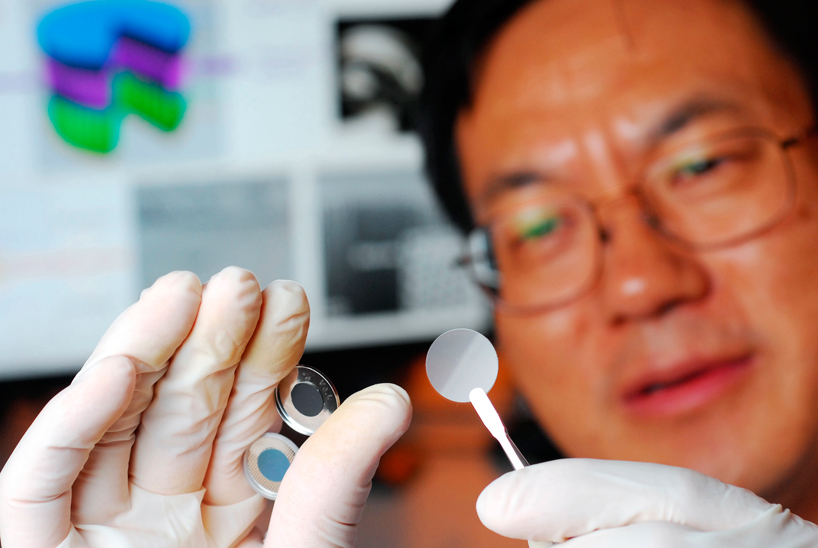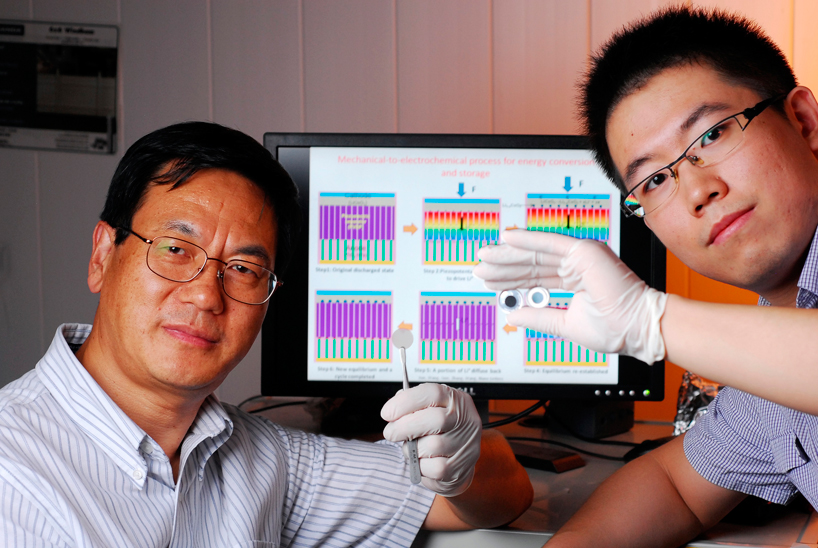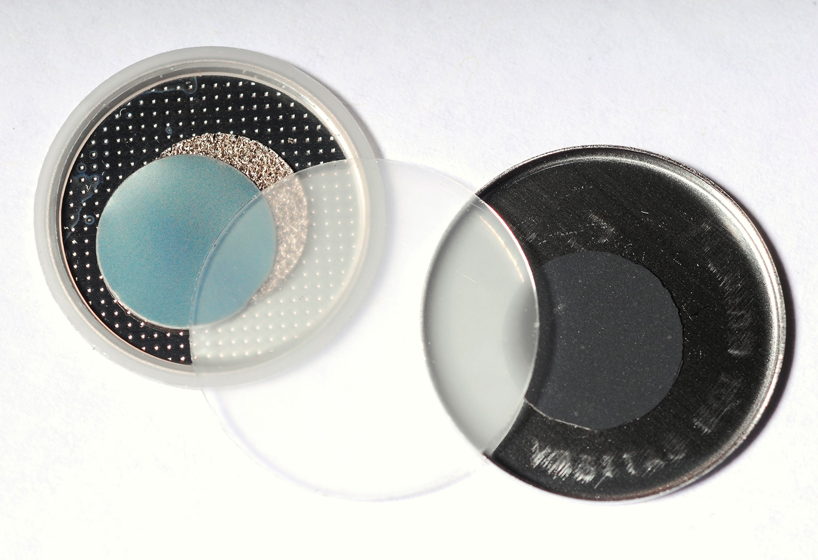self-charging hybrid power cell batteries
researchers at georgia tech have developed a self-charging power cell that directly converts mechanical energy to chemical energy, storing the power until it is released as electrical current. by eliminating this process for charging a battery, the new hybrid generator-storage cell utilizes mechanical energy more efficiently than systems using separate generators and batteries. the system is a piezoelectric (charge that accumulates in certain solid materials) membrane that drives lithium ions from one side of the cell to the other when the membrane is deformed by stress.
the lithium ions driven through the polarized membrane by the piezoelectric potential are directly stored as chemical energy using an electrochemical process. by harnessing this type of compressive force, such as a shoe heel hitting the pavement from a person walking, the power cell can generate enough current to power a small calculator. with time and research, this process can potentially be implemented for military use for charging equipment or in sustainable urban planning for harvesting energy in roads from vibrating and mechanical movements such as the intelligent interactive highway by studio roosegaarde + heijmans.

components of the self-charging power cell
consisting of a cathode made from lithium-cobalt oxide and an anode consisting of titanium dioxide nanotubes grown abovea titanium film, the new technology uses two electrodes separated by a membrane PVDF film, which generates a piezoelectric charge when placed under strain. when the power cell is mechanically compressed, the PVDF film generates a charge capable of driving the lithium ions from the cathode side to the anode side. the energy is then stored in the anode as lithium-titanium oxide.

zhong lin wang (left) sihong wang with the power cell components




